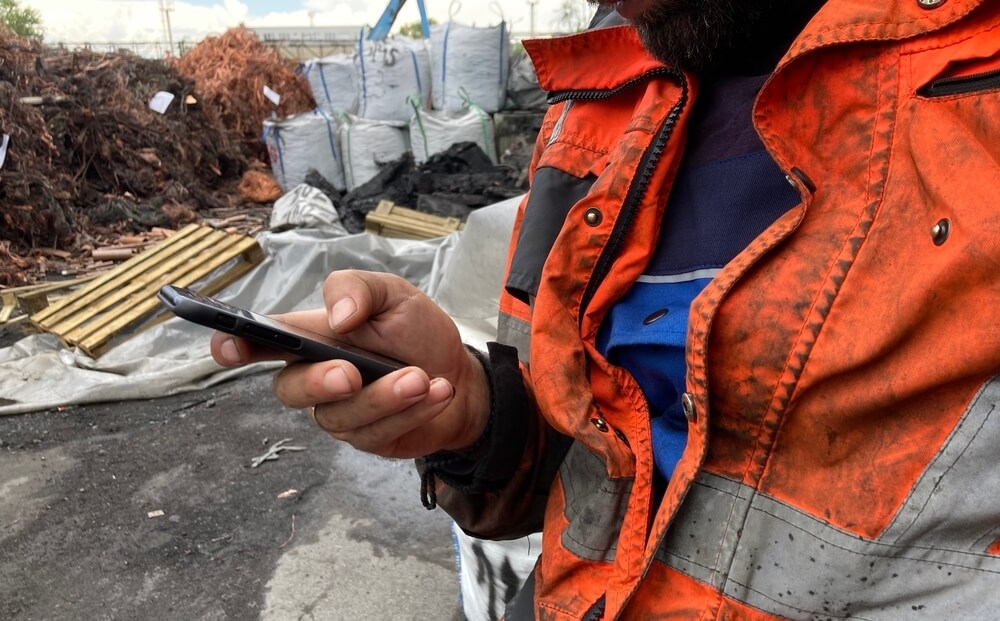What is a tsunami? Imagine a cubic meter of seawater. Imagine the weight of it. It weighs more than you probably think it does—almost a ton.
Now imagine the weight of ten thousand tons of seawater.
Now imagine a billion tons of water.
Now imagine a billion tons of water moving at five hundred miles an hour, the speed of a passenger jet. I personally find that a tsunami is too big and too fast for my imagination to encompass.
In the open ocean, a tsunami is just a few feet high and is barely noticeable. But when it hits shallow water, it slows to twenty or thirty miles an hour, the speed of a galloping horse, and a frothing crest rises, sometimes as high as a hundred feet.
With the development of generative AI over the last year, I feel a bit like someone standing on the shore watching that swollen cliff of water rising, far enough away that it still appears as if I have time to climb or run.
I don’t think anyone knows what capabilities AI will have twenty years from now. Nor does anyone know how much the jobs of human beings will change. But I can offer a few suggestions on how impact investors and social entrepreneurs can help prepare us all for the arrival of the tsunami. In the short term, at least, we can try to mitigate the harm and maximize the benefits of AI.
1. Spread awareness of AI bias
First, make sure that as many people as possible understand how AI can crystallize and amplify human prejudices and hatreds, and insist (wherever you can) that AI tools be continually tested and modified to mitigate their discriminatory effect.
2. AI as a catalyst for efficiency, not a replacement for teachers
Second, fight the natural temptation of education systems to reduce costs by handing the education of lower-income students over to machines. Back in 2012, when I was starting Rethink Education, many people in the tech industry thought that massive open online courses (MOOCs) could replace universities with video recordings of professors, automated assessment tools, and unmoderated discussion boards. Now, many people think that AI tutors can replace teachers. AI tutors can already be helpful in a variety of ways – for example, they can help amplify the effectiveness of a teacher by giving a student extra personal attention and more opportunity to practice a skill. However, at the moment, AI tutors are not great at explaining difficult concepts or identifying student learning needs.
For now, at least, trying to replace teachers with machines is a tragic mistake. We should instead be looking for ways to use AI to reduce the amount of time teachers spend on administrative tasks and preparation of materials – this is a promising area for new startups. We invested in a wonderful company in this space called Magicschool.ai that has already signed up over a million teachers.
3. Rethink the existing school curriculum
Third, we need to do some serious rethinking of what students need to learn. What kind of jobs are we training people for? Which human capabilities will remain relevant in the workplace of the future? Even before the advent of ChatGPT, there was a huge gap between what schools and colleges teach and what employers need. That gap is now widening at a rapid pace. Employers in every sector are looking for skills like self-direction, collaboration, communication, problem-solving, design thinking, empathy, self-awareness, resilience, and the ability to develop productive questions. Some schools and colleges absolutely teach some of these skills, but diplomas and degrees typically don’t guarantee that someone possesses them.
We also need to think seriously about the education system’s jobs other than preparing people for the workforce. People are more than instruments for the use of others. They deserve to flourish and be happy and live with dignity and hope. The arrival of the AI tsunami gives us the opportunity and, I would argue, the obligation, to redesign education so that it creates less stress, unhappiness, and self-doubt, and is more constructed on the scope of a student’s natural curiosity and passionate interests.
For a vision of what education could be like, I recommend looking at Acton Academy, a non-profit federation of schools where children work to discover heroic, world-changing purposes for their lives and learn the skills they need to pursue their missions. Also, Rethink Education portfolio company Sora Schools helps children to pursue world-changing projects and tracks the skills they develop along the way. In higher education, MIT’s Media Lab and Stanford’s d.school are committed to a similar form of education: students start by defining hard problems and then develop multi-disciplinary solutions.
4. Build a defensible solution
Fourth, investors and social entrepreneurs should avoid wasting their money and time on AI education projects that are useless and unlikely to survive. There is a massive AI gold rush in every sector of the economy, and education is no different. Many entrepreneurs are starting companies without a clear idea of the problem they are trying to solve, resulting in a lot of wasted effort. We’re seeing dozens of companies using the same solutions to address the same problems, and we’re seeing products that can be replicated by a single engineer in a few months. Further, underlying generative AI platforms are evolving so rapidly that they frequently cannibalize their own software company clients.
Take the marketing automation company Jasper, for example. Jasper, an OpenAI client, rapidly reached $60 million in revenue and a $1.5 billion valuation. Then, OpenAI released ChatGPT and many of Jasper’s clients decided that they didn’t need to continue to subscribe to Jasper’s software; instead, they could just use ChatGPT to generate their marketing copy (here is a paywalled version of an excellent article on Jasper in TheInformation.com). Jasper was what some people call a “thin wrapper” around the generative AI platform and was not defensible.
So, how does an education AI startup build something defensible? One common answer is to gather a large and proprietary data set. Another is to build tools and features that AI platform companies won’t, such as specific workflows and user experiences, collaboration features, ethical and pedagogical principles, and security and compliance features. As an example, Learnie AI has built an AI math tutor using GPT-4 but with an entirely separate and proprietary code base for its math engine. Since GPT-4 is still unreliable even for basic math, this is a key differentiator.
As an impact investor and co-founder of education technology businesses, I am most interested in education AI businesses that intend to transform our entire system of education and training rather than streamlining one small part of the current system. I hope that you will join me in attempting to use AI as a lever for moving the world in a positive direction.
Matt Greenfield is a managing partner at Rethink Education.
The information contained herein is confidential and should not be distributed, published or reproduced, in whole or in part, nor should its contents be disclosed by recipients to any other person without the prior written approval of Rethink Education. This material is for general informational purposes only and is not intended as investment advice, as an offer or solicitation of an offer to sell or buy, or as an endorsement, recommendation, or sponsorship of any company, security, advisory service, or product. This information should not be used as the sole basis for investment decisions. All content is presented as of the date published or indicated only, and may be superseded by subsequent market events or for other reasons. Past performance is no guarantee of future results. Investing involves risk including the loss of principal and fluctuation of value.











